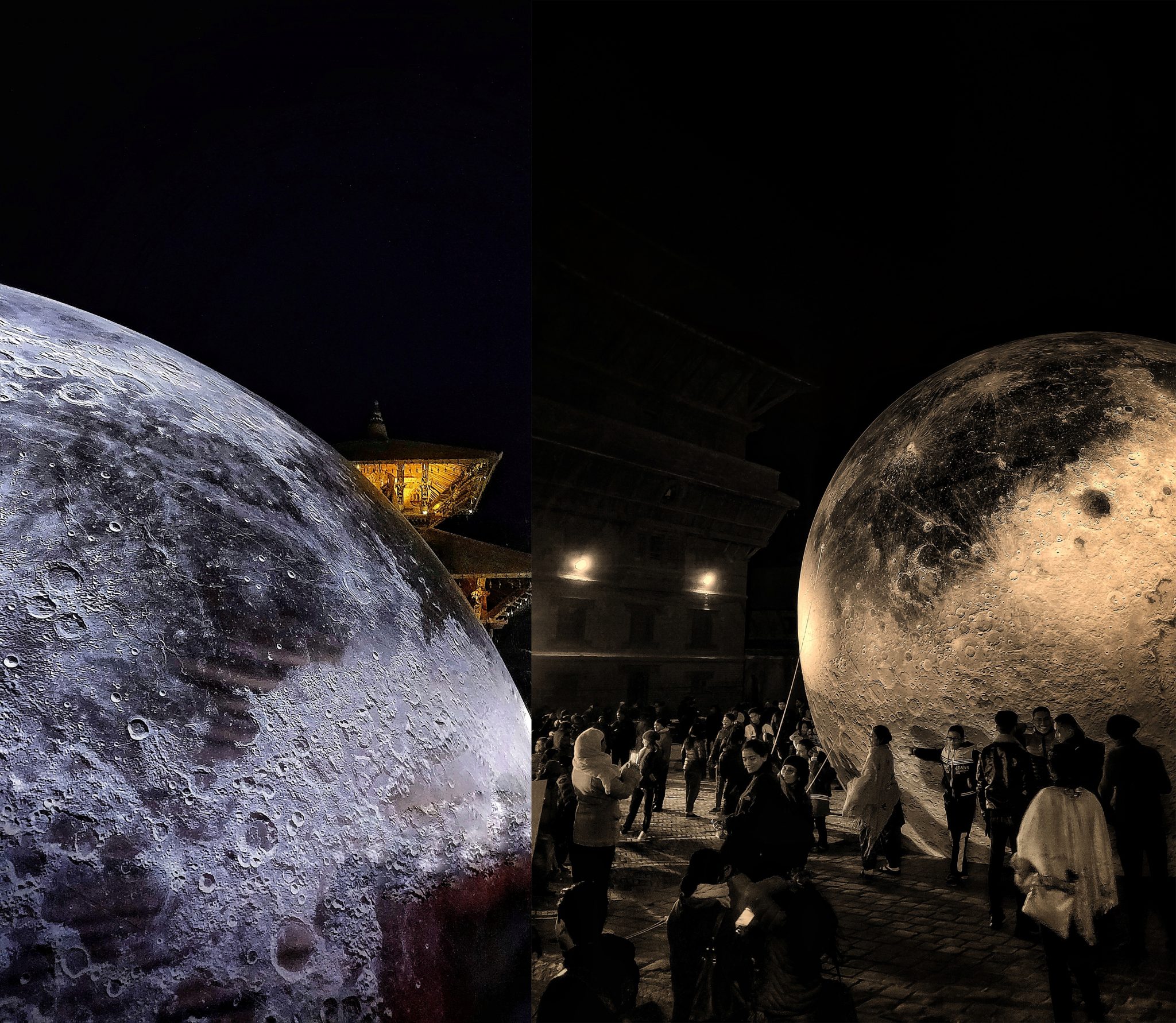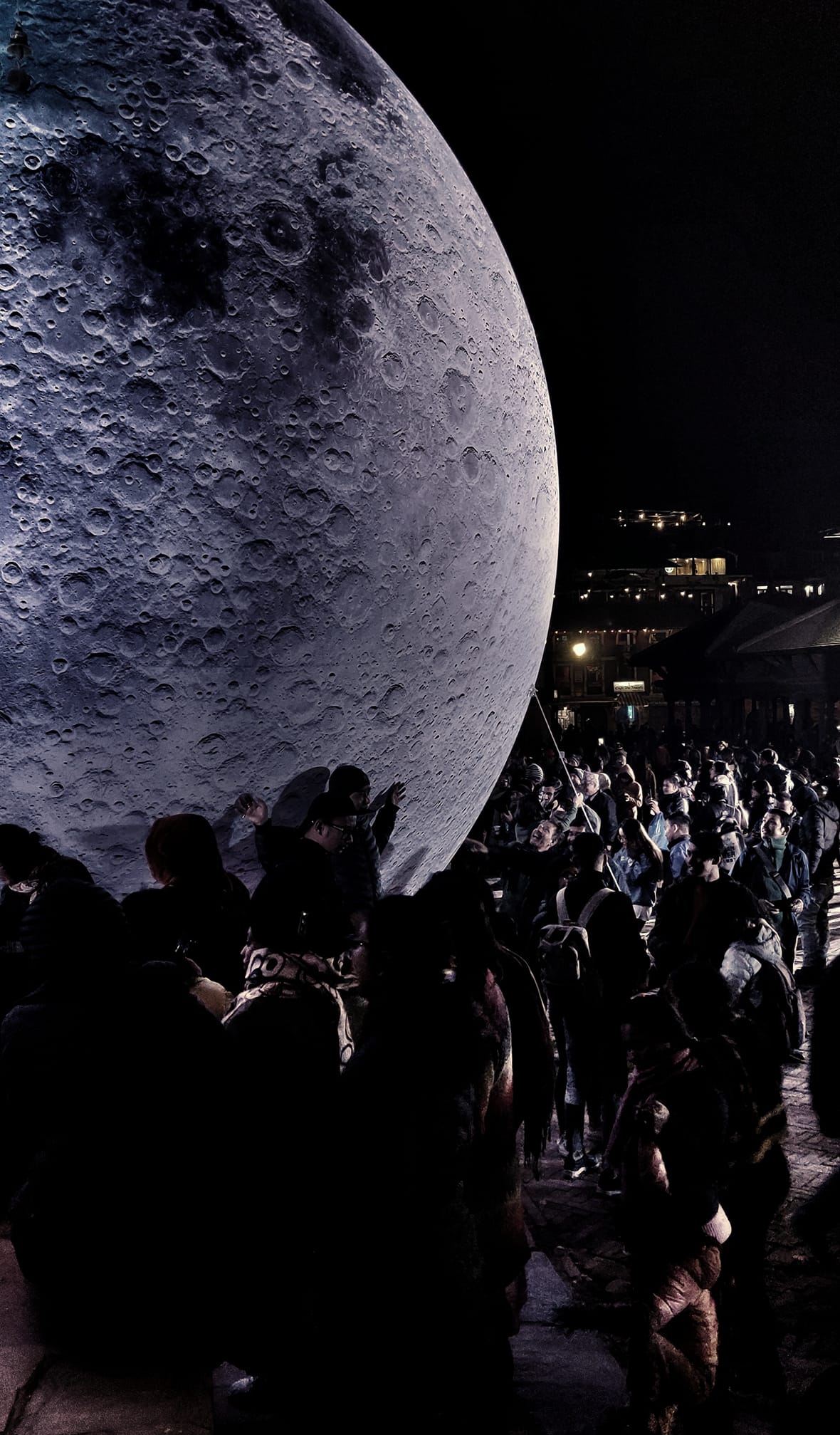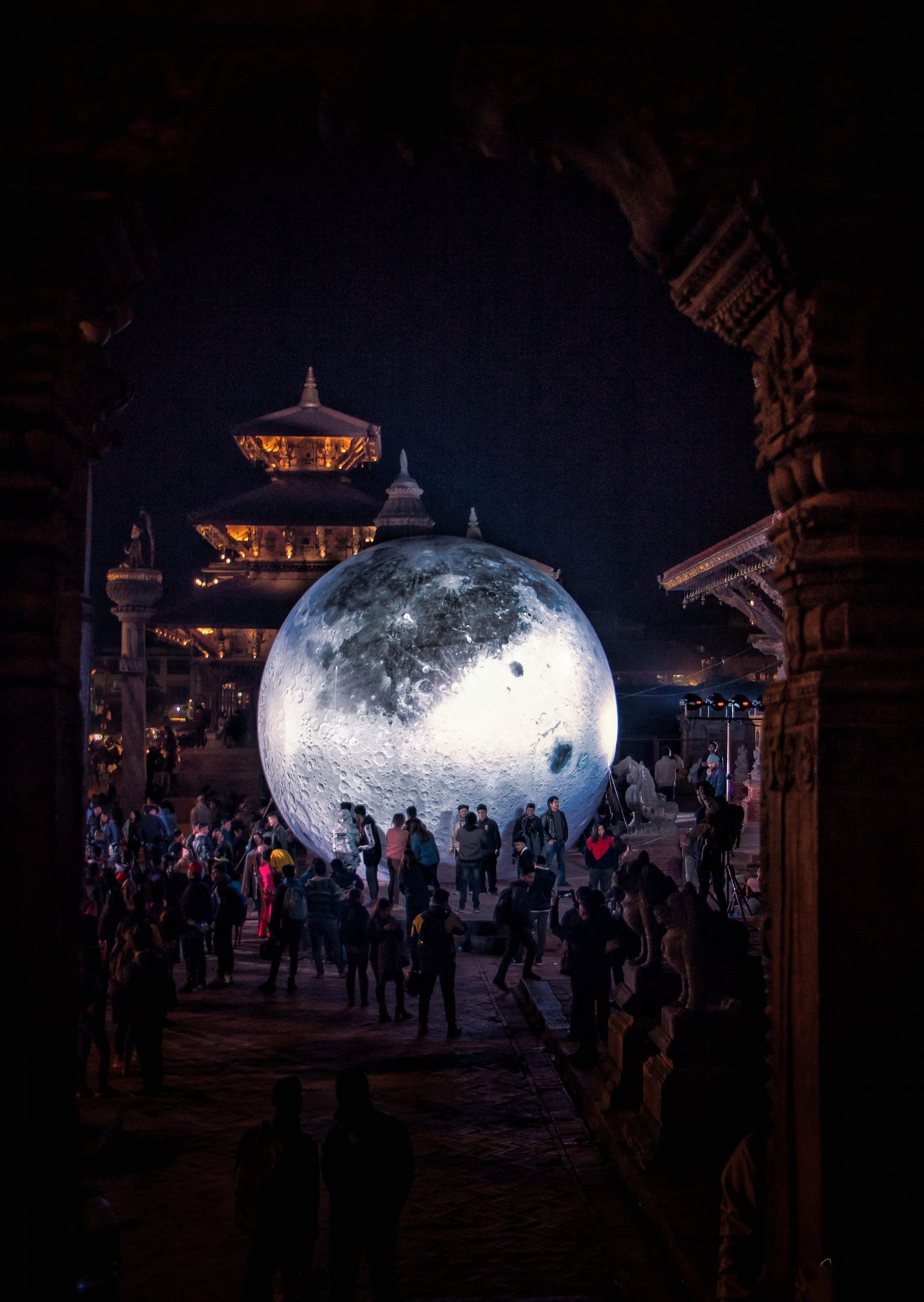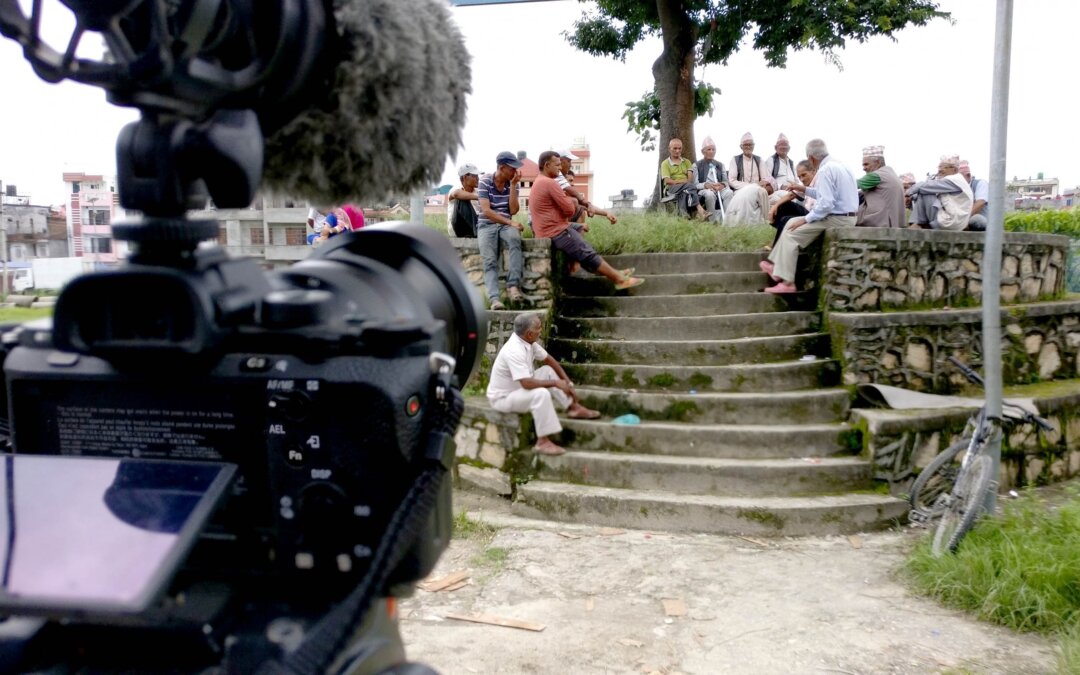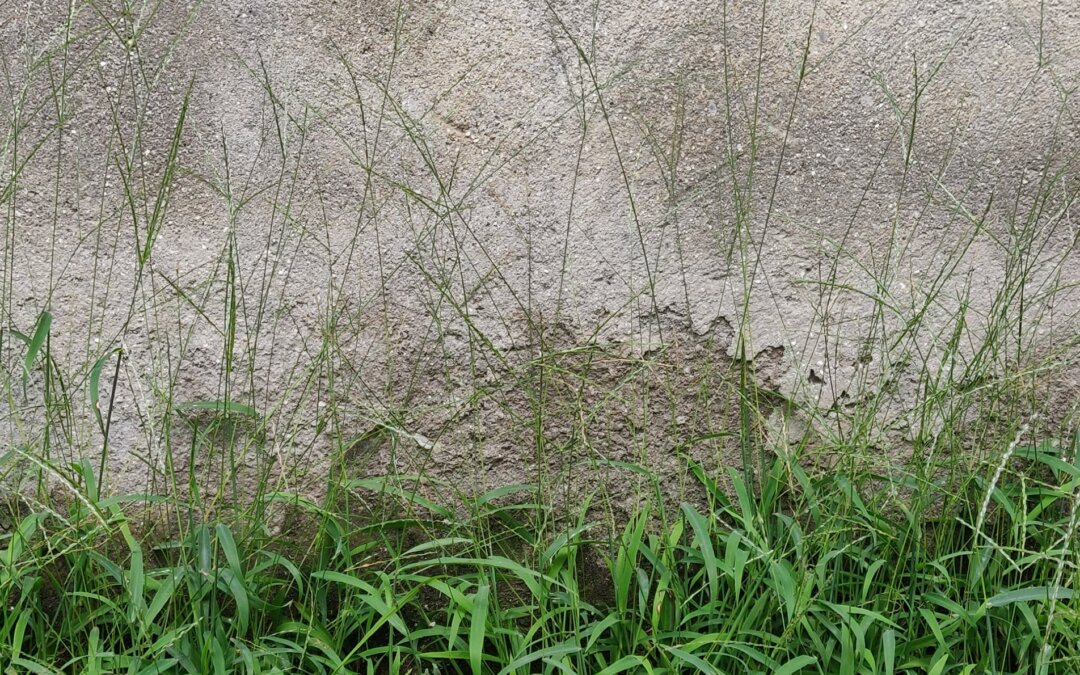I installed a commercially available inflatable moon at Patan Durbar square and called it art. The discourse was needed to explore other aspects of arts in order to progressively advance and even update our understanding of the notion of art. As I predicted people were allured and pulled together by the object. Lots of responses, meanings, experiences, and censures determined by the viewers, it spurred a debate and discussions which I am very grateful for. Here my art is not the object itself but the very thought process and inquiries it holds.
Am I A LUNATIC to re-design this experience to ponder upon these questions?
Concept note on Lunatic 2019: Milan Rai Walter Benjamin talks about the access of art to the masses in the wake of mechanical reproduction in his 1935 essay. “The Work of Art in the Age of Mechanical Reproduction” Although this installation ‘Lunatic ‘aligns with his prediction about art’s public access through mechanical (digital) reproduction, it takes a different approach thereafter. It questions the notion of art’s “aura”, re-visits the definition of the original, investigates the challenges of curating public art in Nepal’s context, and explores socio-political aspects of consumerism in capitalist society.
The act of reproduction is nothing but old and has been practiced for centuries before Benjamin wrote his essay. In light of new technologies and AIs, we are witnessing unprecedented advancements in reproduction, from the digitally printed heart to rocket engines. The image, used in this installation is a publicly available Moon’s map taken by NASA’s Lunar Reconnaissance Orbiter, printed in a factory located in China and installed in Kathmandu, which is in itself a manifestation of accessible technology, information, and modes of reproduction. This data has been used for moon installation by various science museums, schools, institutions, events celebrating moon landing (like that in Matera), and artists, notably Luke Jerram. It then opens other questions- does this installation belongs to science museums, or the said artist or event organizers? Does this idea of taking this installation out of science museum to the town center, an intellectual property? Or say, are installations like this just another version of the data that has been used in a similar way before? What criteria defines it to be able to claim as one’s original work? In the case of publicly available data and cultural practice of installation, what does plagiarism means? Instead of claiming this idea of using publicly available data and using a commercial factory in China that can mass produce it in thousands, as an original piece of work, it welcomes further discussions and questions about the use of information and widely available technology of our times at our disposal. It challenges preconceived notions of art and echoes about our culture of consumerism in underdeveloped cities and its effects on our thoughts.
In regards to consumerism, this installation touches upon the rapid growth of production capabilities of countries like China, where this piece was made. It has helped China to lift millions of people out of poverty and has made tech and non-tech products affordable for poor countries like ours but at the same time has made local business redundant in some areas. In a country run by (name only) socialist government, it inquires our uncomfortable relation with the market, where our main export is mostly human labor and we import everything else. It questions our nature of consumption of mass-produced materialistic objects and the happiness we find in it. It explores the idea of re-inventing “aura” in this reproduction and asks whether we are distancing ourselves from nature
Public arts in Nepal is at the rudimentary phase at its best. Due to lack of funds, grants and the burden of bureaucratic hassles artists and creators have to go through, Kathmandu has not been able to realize the potential of public art as a significant part of urban society. The fact that this installation is sponsored by well-wishers rather than the city or institution, the amount of bureaucracy it has gone through and will be going through in the days to come, highlights the situation of art in public space for the public in Nepal. This installation aspires to move forward this discourse in support of public art, architecture, and the importance of open spaces in the city. Also, in a country where we do not have a decent art venue, science museum, or planetarium, it addresses the need and funding of such entities where children can get inspired to become future scientists, artists, inventors, and astronauts.
Astrophysicist Lawrence Krauss talks about the connection of art and science, and how both faculties ask and explore same questions facilitating our understanding of nature, reality, society, the world we live in or say the observable universe. He argues that we should always be open to change our minds in light of new evidence, get shocked, not be afraid to say that we do not know, and constantly ask questions. Amidst the current climate of populism, fake news, and sensationalism, this installation is primarily about asking and exploring questions.
https://www.youtube.com/watch?v=JbRh0rKrKjY&feature=youtu.be
